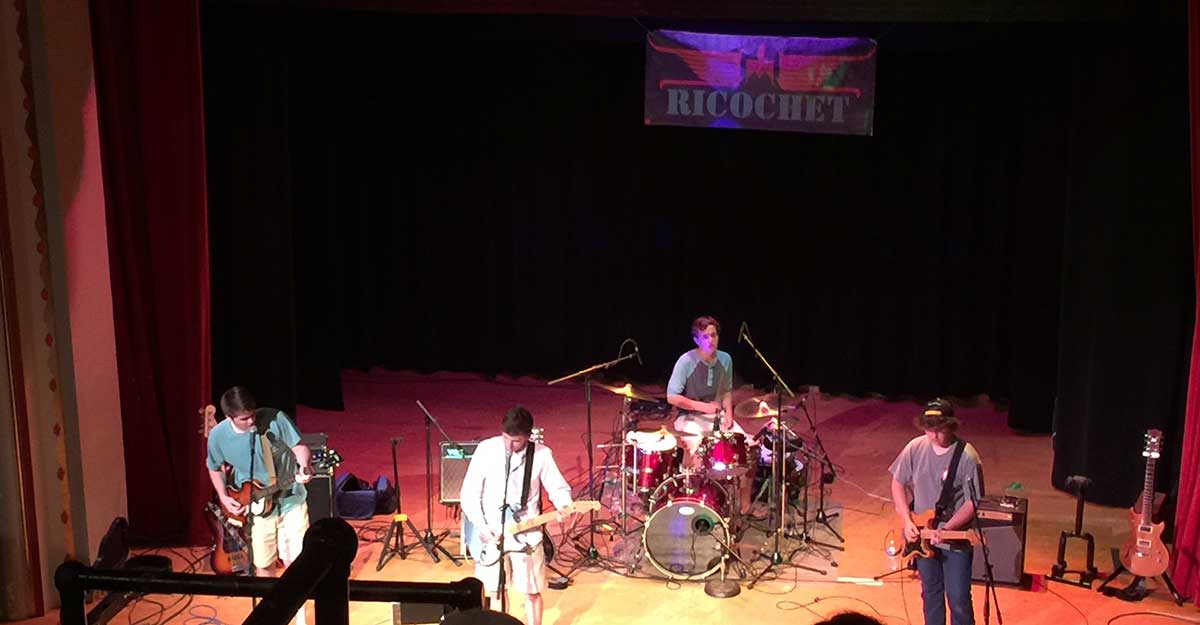
I went to a concert last night. It was a farewell show for a bunch of high school guys, one of whom was leaving for college in the Fall. I knew one of the kids since he was in first grade, at the school where I worked before I retired.
“Old Masters”
They played a lot of 60’s rock: Jimi Hendrix, Cream, The Beatles, Eric Burdon and the Animals. These kids studied the “Old Masters”. Of course, they had their style with these classic hits. Alexander, the lead singer and the kid I knew, did a great job on the vocals and guitar.
The concert, for me, came alive when the band started performing Alexander’s original music. Writing songs since he was in the third grade, Alexander developed his style of music over the years. I remember a talent show at the school in which he sang his first original song. I thought it took a lot of moxie to do that in front of a group of some three hundred plus people.
Stunningly original
In many of Bill’s videos, he encourages us to create original artwork. He also states that he understands that you may have to start with copying photographs. He admits to doing that himself. To separate yourself from other artists, you must create your original work. Original work sells, Bill says. And he would know. Bill sold a lot of his work because it was original.
I read an article some time ago in which an artist said he hated to hear this phrase. “Your art reminds me of (enter the name of any famous artist).” He said he did not want anyone associating his work with any other artist. He wanted his work to be stunningly original.
It’s good to copy…but
It’s good to copy another artist’s work as part of your learning process. Copywriters do that all the time. They will write out by hand famous sales letters to understand the person who created it. Writers will copy works of Hemingway to experience the writing process. Students fill major art galleries copying the works of the “Old Masters.” There comes a point, though, when you have to break away from the reference photos. You have to stop copying paintings and strike out on your own. To create original artwork, you need a solid foundation. Certain skills, such as composition and perspective are critical.
I’m reading Ernest Norling’s book titled “Perspective Made Easy”. Published in 1939, it contains everything you need to know about perspective. In the book, Norling explains perspective in a simple, easy to understand way. I’ve looked at a lot of paintings in the last two years, and I can tell when there are problems with perspective. Until I read this book, though, I didn’t know, with certainty, what the problem was — now I do!
The horizon
I was looking at a painting recently and realized that “something” was wrong. I realized the painter had created two horizon lines. Norling’s book shows how to find the horizon line even when no horizon is visible. (There is always the horizon!) Norling’s book helped me appreciate the simplicity of getting this one element right in a painting.
In our Master Class, we teach the concept of the horizon and nine more of the Landscape Laws. It is critical that painters who want to create original artwork understand these concepts. When students graduate, they have the tools necessary to paint original landscapes.
The next level
Of course, Bill knew these laws at an unconscious level. In fact, you can take any one of his paintings and see them at work. (We’ll be doing a series soon demonstrating just how he did it.)
When you start to create original work, your art will leap to the next level. You will separate yourself from every other artist who copies the same tired themes and boring ideas. You will grow as an artist.


Leave a Reply